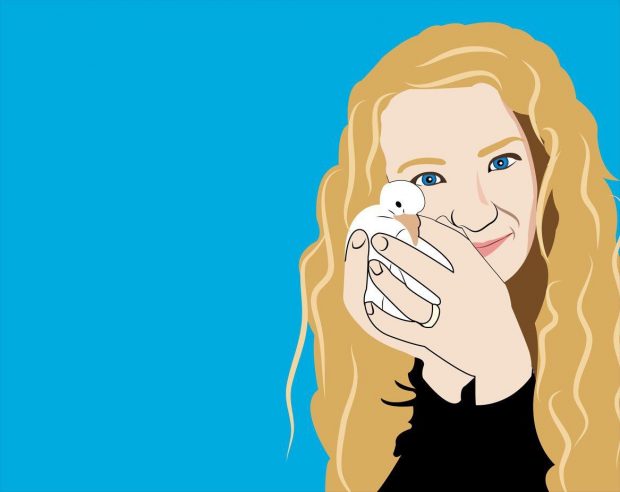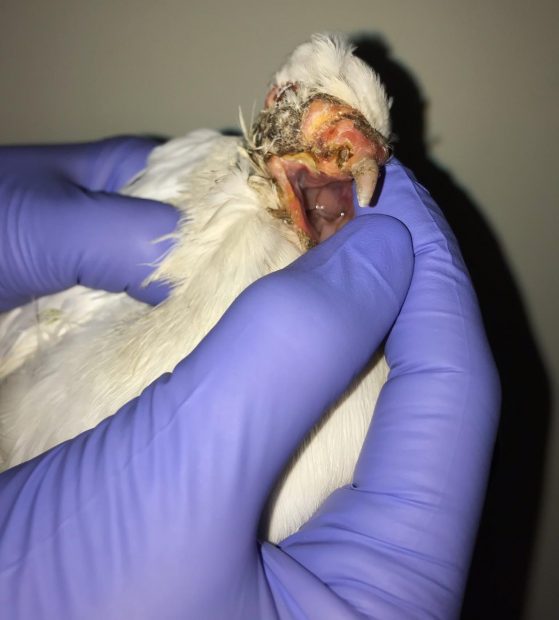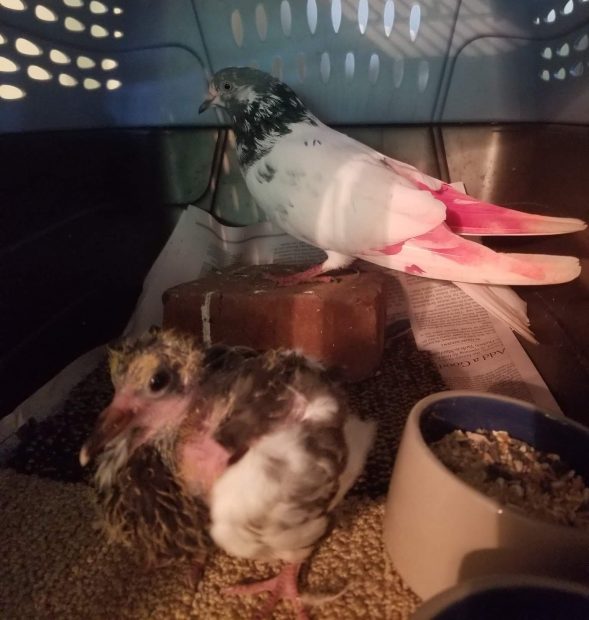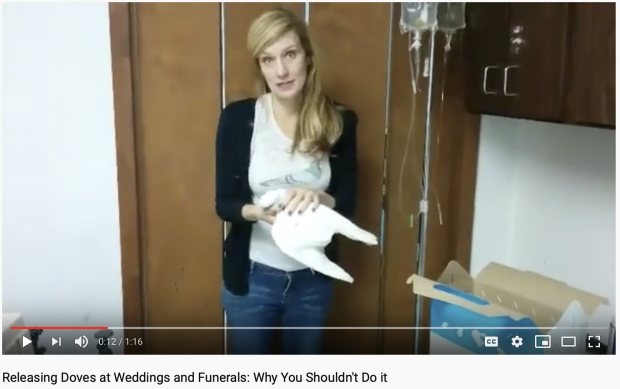Guest post by Michele Wellard

Much has been written on the subject of white “doves” released for weddings, funerals and ceremonies and why it is not a good idea. I hope that this information is starting to reach the wedding and funeral-planning public. Many “doves”, even if they are white homing pigeons, are injured, killed, or starve to death when released. The ones who are not homing pigeons, helpless white Ringneck doves and King pigeons with no ability to home, have it even worse. They are “set free” with no ability to return and no idea how to fend for themselves; wandering around, bewildered and scared, until some terrible fate occurs. I have seen for many years what happens to these birds, and I am writing this post to explain the conditions they are found in when lucky enough to be brought to a pigeon-friendly wildlife rehabilitator.
I am a wildlife rehabilitator with over 10 years experience. My team (now at Philadelphia Metro Wildlife Center – a pigeon-friendly center!) treats three to four thousand animals every year. Among these are several dozen “dove release” survivors. The calls for help are usually the same. Some caring member of the public will spot what they call a “white dove” hanging around somewhere – their home, a shopping center, etc. – looking lost and seemingly unable to or uninterested in flying away. Many times, these members of the public are kind enough to follow instructions on how to catch the bird and bring it to my center for care.
For many of these birds, the “beautiful” release is their first time flying out in the wild, outside of captivity. Having not been raised in the wild, they are especially vulnerable when flying around free. And that leads to the number one problem I see presented in dove release birds that I receive: starvation, dehydration and emaciation. Many people report that they think the bird has a broken wing because it will not fly but many times, the wings are fine. The bird cannot fly because physically it is just too weak. Sometimes, the birds are so far gone that their organs have started to shut down and there is nothing we can do to save them. Other times, with a rehydration protocol, we can rehydrate them and start to add calories, usually by tube feeding, until the bird regains strength enough to eat on their own.
Beyond starvation, most of the dove release birds are suffering from a catalogue of medical problems. They have parasitic infections like trichomoniasis, worms and coccidia We know that stress impacts the immune system negatively, lowering resistance to disease, and these birds are under extreme stress having just been tossed out into a dangerous landscape. Sometimes we can treat these infections with medication and supportive care, but some birds are just too far gone by the time they are found. Last month, I treated a huge, beautiful white pigeon (who was clearly from a release) for a raging and horrific trichomoniasis infection and emaciation. Trichomoniasis is a protozoan infection that causes internal symptoms, but also can cause a cheesy discharge in the throat that hardens and expands, eventually blocking the throat and mouth. This poor bird had almost his entire esophagus blocked, and the hardened infectious material reached up to his brain, distorting the entire shape of his head. He was suffering greatly, emaciated and at death’s door so I gently euthanized him, at least able to release him from pain.





